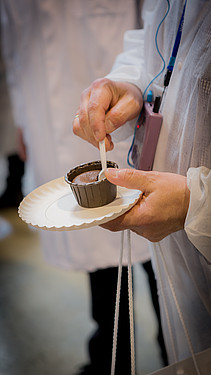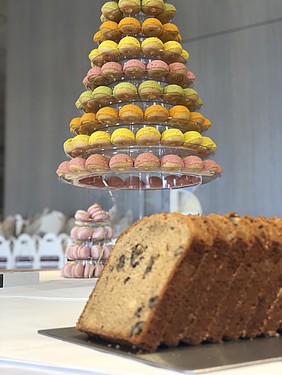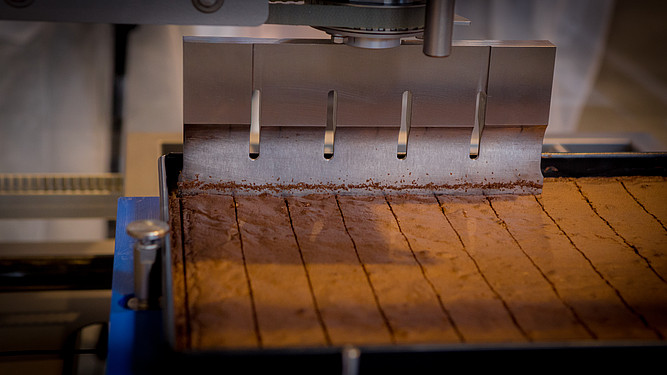Preserving the quality of an industrial patisserie product from baking through to consumption
When they are removed from the oven, the sound, colours and smells of patisserie products stimulate the senses. To maintain the quality of the finished product until it reaches the consumer's palate, the stages following baking are crucial: cooling, customisation, packaging, etc. How can manufacturers ensure the organoleptic properties of their patisserie products remain intact until they reach the consumer? Between gentle handling of the products and precision in the cooling and freezing stages, the industrial baker must strive to ensure the product's quality remains constant right through to the last link in the chain.
In this article we focus on the main challenges facing industrial patisserie manufacturers after the baking phase.
Cooling, a crucial stage
When the product leaves the oven it begins to cool, constantly evolving as it does so. A critical stage from a microbiological and organoleptic perspective, the cooling phase is decisive in ensuring the perfection of the finished product and guaranteeing an optimal shelf life. How can industrial bakers make the cooling stage key to a successful finished product?
Good hygiene practices
As with all agri-food industries, the risk of contamination is present all along the patisserie production cycle. While it is essential to remain vigilant at every stage of production, it is particularly important once the product has finished baking. The temperature range most suitable to the development of bacteria is situated between 5 and 60°, which corresponds to the cooling stage. Strict control of hygiene and air purity in the cooling area is essential in order to prevent bacteria proliferating once the product has been packaged.
One solution consists in separating the cooking and cooling circuits in order to avoid polluting the clean area with particles from other areas. Dedicated cooling trays, easy to clean and kept separate from the baking pans, are recommended.
Strict hygiene control is a major challenge for the industrial patisserie sector. Due to their high moisture content, patisserie products are particularly susceptible to contamination.
Temperature control, a decisive factor in quality
To prevent the deterioration of the baking products' organoleptic properties, the temperature decrease must be controlled. A pre-cooling phase may even be recommended. "Between the end of baking and the beginning of the rapid cooling phase, it is important that the products rest and cool," [1] confirms François Hauton, CEO of CREA (Research Centre for Food and Nutrition).
For industrial patisseries which undergo an additional customisation stage after leaving the oven, the temperature of the product must be controlled even more precisely. Indeed, the customisation stages (cutting, filling, icing, etc.) must be carried out on a fully cooled product so as not to affect its appearance and texture.
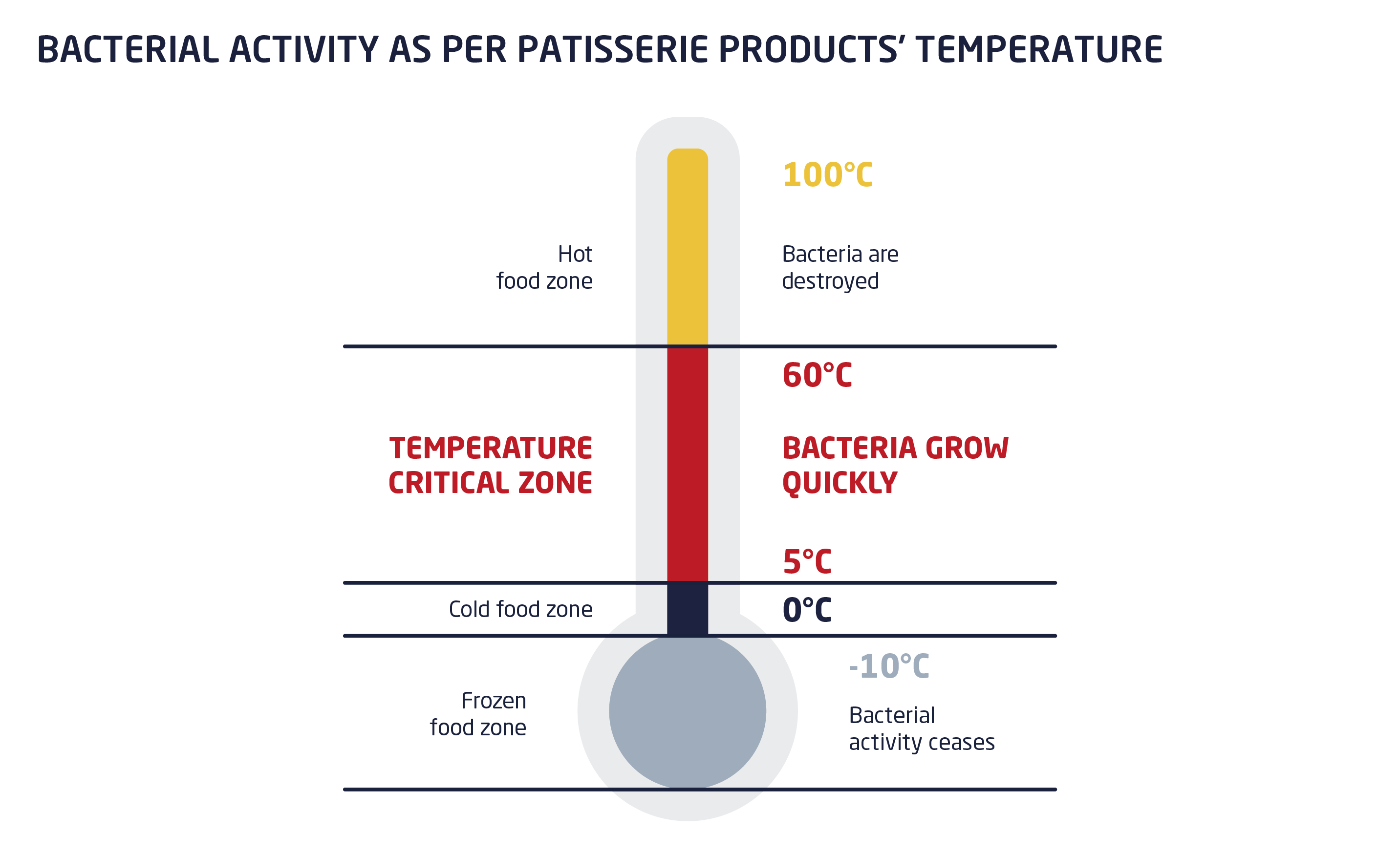
After cooling: different processes to guarantee the products' preservation
Once cooled, the patisserie products are ready to be packaged or frozen. However, manufacturers must ensure that the products' quality remains constant over time.
Focus on freezing
Whether they consist of basic rich dough, choux pastry or ready-to-fill tart shells, all patisserie products can be frozen. With the volume of sales of frozen patisserie products predicted to increase by 3% by 2021, freezing is a real opportunity for industrial patisserie manufacturers.
From the simple finished product (plain muffin, loaf cake, pound cake) or complex finished product (eclair, filled and decorated muffin) to the semi-finished (pastry base, genoise sponges, etc.), freezing offers manufacturers numerous advantages. Below -10°C, bacterial activity ceases. However, the temperature and speed of freezing influences the appearance and texture of the final patisserie product. The freezing parameters must therefore be correlated with the product's characteristics to ensure its quality is maintained. A rapid temperature decrease generates the formation of small ice crystals which help to preserve the product's organoleptic properties. It is essential to plan the thawing phase very early in the production process by adapting the recipe. "The complexity of a production line lies in ensuring that each stage fulfils its quality criteria to enable the next stage to be carried out in good conditions," concludes François Retailleau, line product manager at Mecatherm.
Fresh products or frozen products: quality comes first!
Unlike bread, industrial patisserie products have a longer shelf life and mainly sweet organoleptic properties. To extend the shelf life and offer consumers and professionals more flexibility in their use of the products, brands use several packaging techniques: individual packs or modified atmosphere packs. "Packaging plays a key role in a product's conservation. It prevents contamination, protects it during transport and contributes to the uniqueness of the taste experience," explains Loïc Le Denmat, patisserie chef at Mecatherm. Whatever the technique used, the objective remains the same: to ensure the optimal quality of the product until its consumption. While at the same time capitalising on a flexible production tool able to carry out multiple processes.
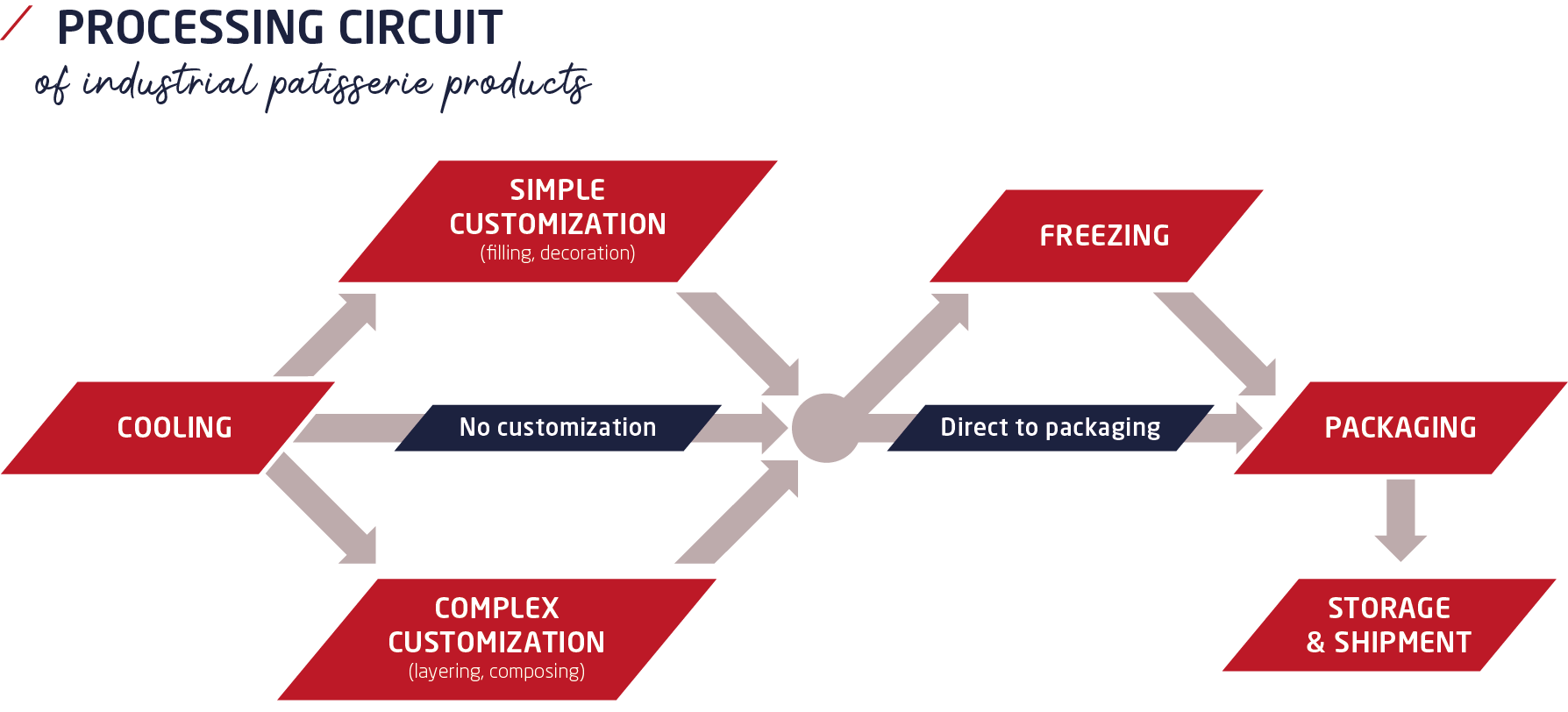
To guarantee the irreproachable quality of patisserie products, the cooling, post-baking customisation, packaging and freezing stages must be taken into account from the beginning of the manufacturing process.
Conscious of this complementarity between the different production stages, Mecatherm designs industrial patisserie production lines which integrate all the variables.

